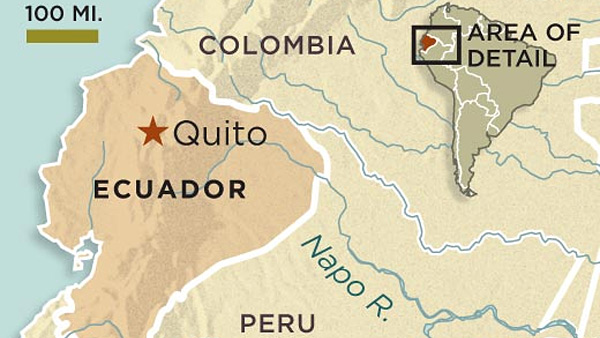
|  |  |  Editorials | Environmental Editorials | Environmental  
Wildlife Trafficking - Part 5
 Charles Bergman - Smithsonian.com Charles Bergman - Smithsonian.com
go to original
January 10, 2010

Smithsonian magazine, December 2009


| | Wildlife trafficking is thought to be the third most valuable illicit commerce in the world, after drugs and weapons, worth an estimated $10 billion a year, according to the U.S. State Department. (Guilbert Gates) |  |
"Who do you think did this?" I asked no one in particular.

Nelson said: "Three or four days ago, Fausto was seen coming up the river. He had three scarlet macaw chicks in his canoe."

Could it have been Fausto, who warned me that he did not think this nest would survive? It had not occurred to me that he would poach these macaws, and it felt like a betrayal. The next day, on the river, we would ask him ourselves.

We were having lunch on a sandbar when we heard another canoe motoring upriver—Fausto, returning home. He had been hunting. His canoe held two live turtles and a dead guan, a turkey-like bird.

We asked him if he had taken the macaw chicks. He denied it.

"But I know who did it," he said. "They told me there were only eggs still in the nest. No chicks."

We asked him about the three scarlet macaw babies he had in his canoe just a few days earlier.

"Those were from another nest farther downriver," he said. He said he had cut down another tree with crimson-fronted macaws, near his house, but the babies were already fledged and flew out of the nest hole as the tree crashed to the ground.

His story seemed garbled and doubtful. In any event, it was clear that he was poaching animals. I had traveled with a trafficker for more than a week without realizing it.

As we rode back up the river, I asked the Huaorani men if they worried that overhunting would mean their wildlife would disappear. "We have to put the brakes on," Nelson said, adding that they had to travel farther and farther just to find animals. "We see the animals disappearing. We have to raise consciousness. We want to be the protectors of wildlife."

In his early 20s, Nelson may speak for a new generation in the Amazon Basin of Ecuador. A few others I spoke with shared his view. Some are hoping to turn to tourism as an alternative to poaching. The Napo Wildlife Center in Ecuador, for instance, employs Quichua people as expert guides for tourists. Anti-poaching initiatives are trying to raise awareness about wildlife and provide incentives to protect it.

Still, people are poor, and they continue to see wildlife as a resource to earn money. During one nesting season, we had identified five active nests of macaws and parrots, including the scarlet macaws, two pairs of chestnut-fronted macaws, one pair of blue-headed parrots and one pair of black-headed parrots. As we journeyed up and down the river, we watched for the nest trees. Every one of them had been cut down. The parents had vanished. Here and in many places, trafficking is creating a strange world, a forest without its creatures—a naked forest.

Charles Bergman has written about jaguars and monkeys for Smithsonian and is writing a book about the wild animal trade.


|

 |
|  |



